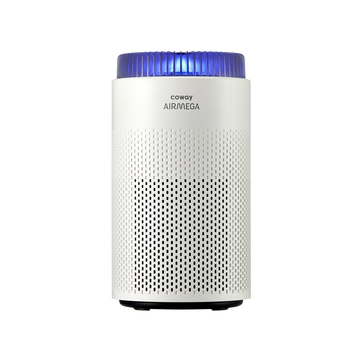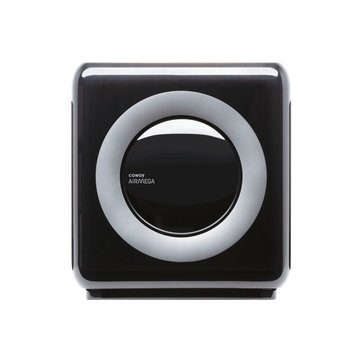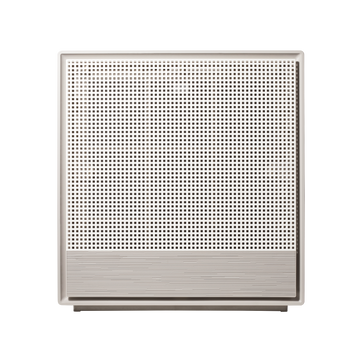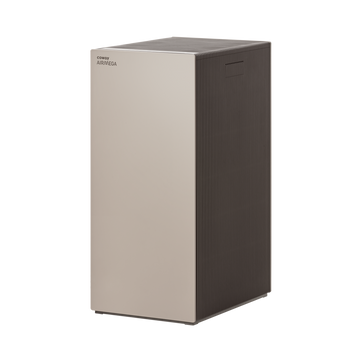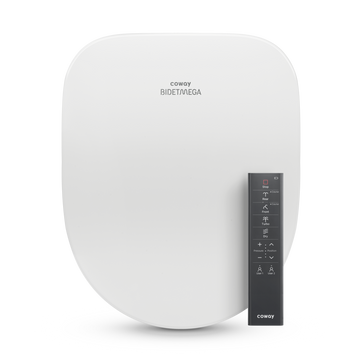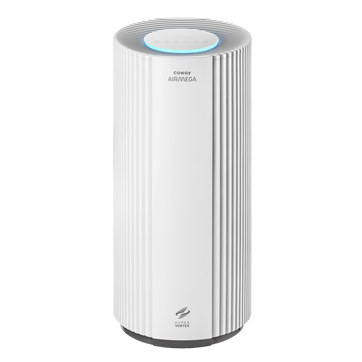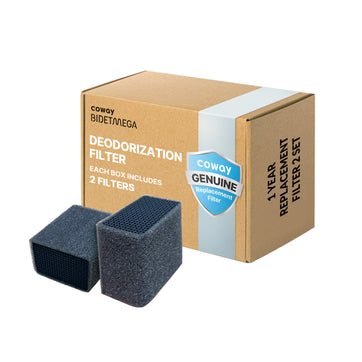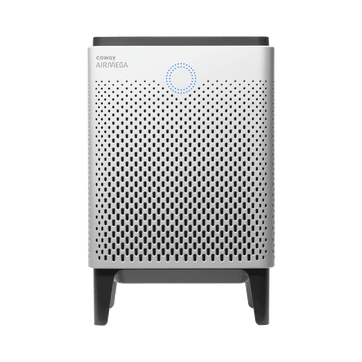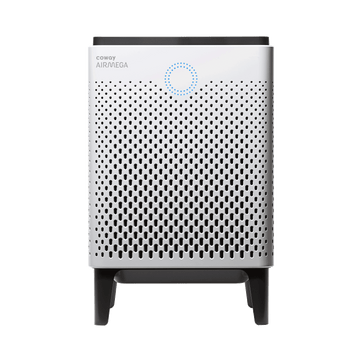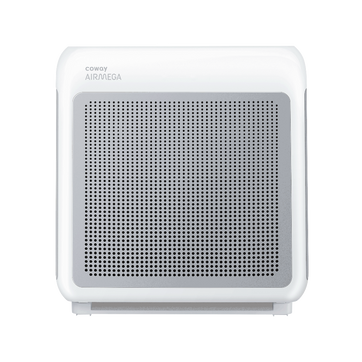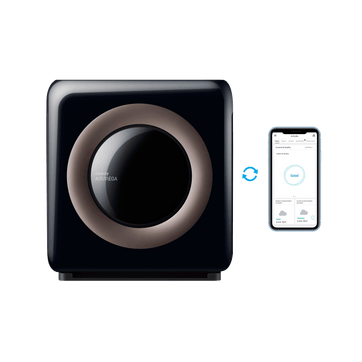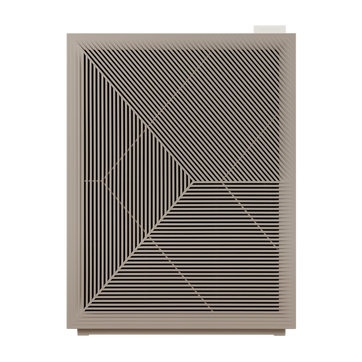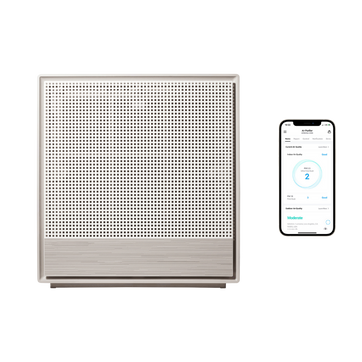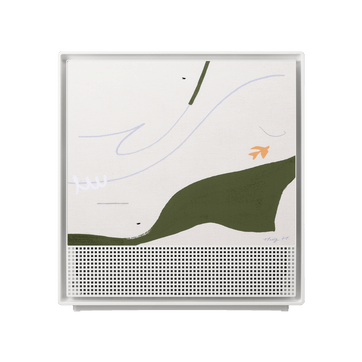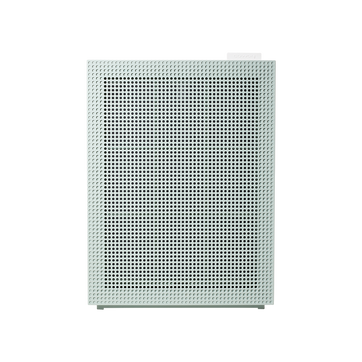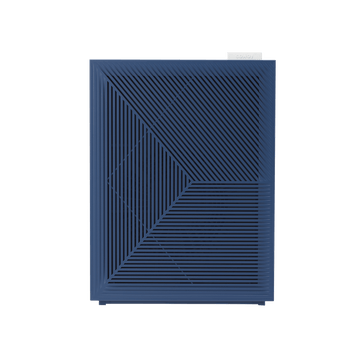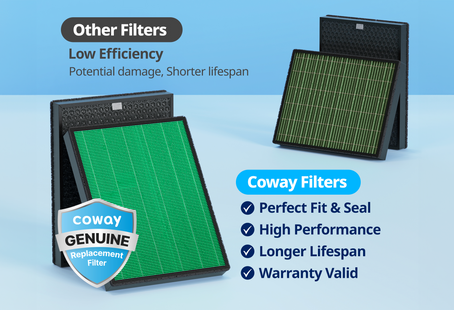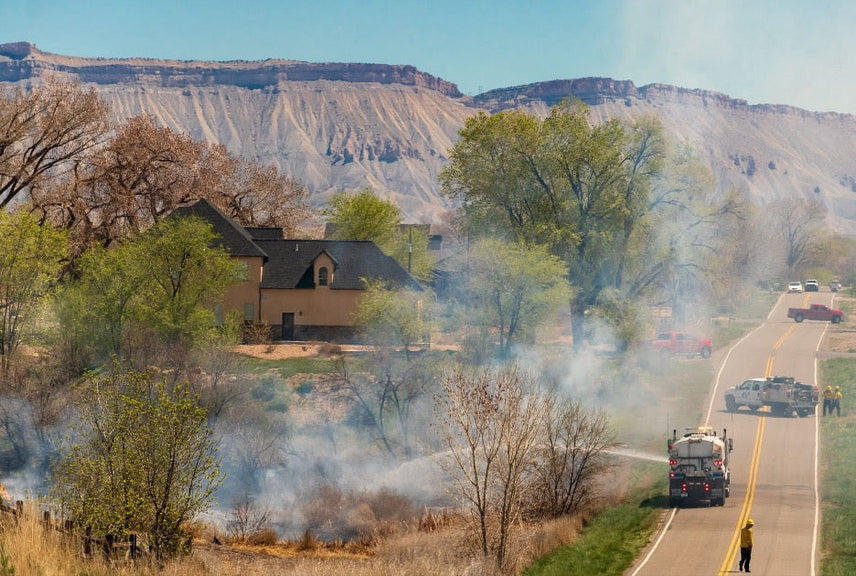
Wildfire Smoke in Your Home? Critical Steps to Protect Your Air Quality
The moment wildfire smoke infiltrates your home, it brings with it more than just a distinctive smell—it introduces a complex mixture of harmful pollutants that can severely impact your family's health. As climate change continues to fuel more frequent and intense wildfires across the continent, the threat extends far beyond the flames themselves. That’s because wildfire smoke can actually travel hundreds of miles from its source, carrying with it dangerous particulate matter and toxic compounds that penetrate deep into your lungs.
What many of us might not realize is that this smoke doesn't just contain burnt vegetation—it also carries particles from consumed household materials like plastics, metals, and treated lumber, creating a dangerous cocktail of airborne toxins that can trigger immediate respiratory issues and potentially contribute to long-term health problems.
Want to know the best air purifier for smoke? Check out our guide here!
Understanding the Invisible Threat of Wildfire Smoke
Wildfire smoke contains a dangerous mix of particulate matter and gases that pose significant health risks. During a wildfire, the burning of vegetation and man-made materials releases organic carbon, black carbon, nitrogen oxides, carbon monoxide, volatile organic compounds, and other hazardous air pollutants. The most concerning component is PM2.5—particulate matter smaller than 2.5 microns that can penetrate deep into your lungs and even enter your bloodstream.
These microscopic particles are particularly harmful because:
- They're small enough to bypass your body's natural defense mechanisms
- They can cause inflammation in your respiratory system and throughout your body
- They pose special risks to children, elderly individuals, pregnant women, and those with pre-existing conditions
- They can trigger immediate symptoms like coughing, throat irritation, and difficulty breathing
- With prolonged exposure, they may contribute to more serious conditions, including lung and cardiac diseases
But the risks extend beyond the visible smoke. Even when skies appear clear, harmful particulates can remain suspended in the air, making comprehensive protection essential.
Expanding Wildfire Seasons Mean Year-Round Vigilance
While wildfire season traditionally peaks between June and August in North America, climate change has dramatically extended this timeframe. Climate whiplash events—where periods of heavy rain promote vegetation growth followed by intense dry spells—create perfect conditions for fires year-round. Combined with strong seasonal winds that can reach hurricane-force speeds of 80-100 mph, fires can quickly spread beyond containment, sending smoke far from the original source.
The transition between El Niño and La Niña weather patterns creates particularly vulnerable conditions, where previously wet regions experience sudden, intense dry periods. With vegetation drying faster than in previous decades due to climate change, fire risks now exist even during traditionally lower-risk seasons.
This changing reality means air quality protection needs to be a year-round priority, not just a seasonal concern.
7 Critical Steps to Protect Your Indoor Air During Wildfire Events
Our 7 critical steps provide immediate protection during wildfire events and create a resilient strategy for cleaner air when you need it most.
1. Stay Informed About Air Quality
Knowledge is your first line of defense. During wildfire season, stay vigilant by monitoring air quality indexes (AQI) through reliable sources such as government websites, weather apps, and local news. These resources provide real-time information about air quality conditions in your area, allowing you to make informed decisions about outdoor activities and indoor protection measures.
Understanding the AQI scale helps you determine when to take action:
- Good (0-50): Air quality is satisfactory
- Moderate (51-100): Acceptable for most, but may pose concerns for sensitive individuals
- Unhealthy for Sensitive Groups (101-150): People with respiratory conditions should limit outdoor exposure
- Unhealthy (151-200): Everyone should reduce outdoor activities
- Very Unhealthy (201-300): Everyone should avoid outdoor exertion
- Hazardous (301+): Everyone should avoid all outdoor activities
2. Create a Sealed Home Environment
When wildfire smoke threatens, your home should become a clean-air sanctuary. Keep windows and doors closed to prevent smoke infiltration. Seal gaps around windows, doors, and vents with weatherstripping or towels. If you have an HVAC system, ensure it's set to recirculate indoor air rather than drawing air from outside, and install high-efficiency filters (MERV 13 or higher) to capture particulates.
For homes without central air conditioning, consider designating one room as a clean-air space. This room should have minimal exterior walls and windows, making it easier to maintain air quality.
3. Invest in Effective Air Purification
Premium air purifiers are essential for removing fine particulate matter from wildfire smoke. These specialized filters can capture particles as small as 0.01 microns—far smaller than the dangerous PM2.5 particles in smoke.
For optimal protection, select an air purifier specifically designed to address wildfire smoke concerns. Our Airmega line features advanced filtration technology that effectively removes smoke particles and associated gases. The Airmega Mighty AP-1512HH and 200M models can be equipped with specialized Intense Smoke+ filters engineered to remove up to:
- 99.99% of Naphthalene (from burning wood, leaves, and synthetic materials)
- 99.98% of Sulfur dioxide (from burning sulfur-rich materials)
- 99.98% of Nitrogen dioxide (from burning trees, grass, and nitrogen-containing organic matter)
For larger spaces, the Airmega 350 and 450 models cover areas up to 2,640 and 3,285 square fee, respectively, providing comprehensive protection for open-concept homes or offices. These purifiers feature smart monitoring systems that continuously assess indoor air quality, automatically activating when they detect declining air purity.
Even more crucial during wildfire season, these premium models come equipped with the advanced 3-in-1 intense smoke filter technology, specifically engineered to capture and neutralize the dangerous ultrafine particles and volatile organic compounds found in wildfire smoke that standard filters often miss.
4. Minimize Indoor Pollution Sources
During wildfire events, avoid activities that can further compromise indoor air quality. This includes:
- Postponing cooking methods that generate smoke or particulates, such as frying or broiling
- Avoiding candles, incense, and wood fires
- Limiting use of gas stoves and other combustion appliances
- Postponing vacuuming unless using HEPA-filtered vacuums (standard vacuums can stir up settled particles)
- Avoiding aerosol products and harsh cleaning chemicals that release volatile organic compounds
These preventative measures help maintain the cleanliness of your indoor air, reducing the burden on your air purification systems.
5. Use Proper Masks When Necessary
If you must venture outdoors during poor air quality conditions, proper respiratory protection is crucial. Keep in mind, though, that not all face coverings provide adequate protection against wildfire smoke.
- Cloth masks and surgical masks offer minimal protection against fine particulates
- N95 or N100 respirators are recommended as they can filter out at least 95% of airborne particles
Ensure your mask fits properly, creating a tight seal around your face, and remember that masks have limitations and should be used alongside other protective measures Children, elderly individuals, and those with respiratory conditions should be especially cautious about outdoor exposure during wildfire events.
6. Stay Hydrated and Support Your Respiratory System
Proper hydration helps your body process and eliminate toxins from smoke exposure. Water keeps your airways moist, supporting your respiratory system's natural defense mechanisms. Consider using a water purifier to ensure you're drinking clean, contaminant-free water.
Additionally, focus on anti-inflammatory foods rich in antioxidants, including:
- Colorful fruits and vegetables
- Fatty fish high in omega-3 fatty acids
- Foods containing vitamin E and C
- Turmeric, ginger, and other anti-inflammatory spices
7. Monitor Your Health Symptoms and Seek Medical Advice When Needed
Pay close attention to how you and your family members respond to changing air quality. Common symptoms of smoke exposure include:
- Irritated eyes, nose, and throat
- Coughing and wheezing
- Shortness of breath
- Headaches
- Fatigue
Individuals with pre-existing conditions like asthma, COPD, or heart disease should be particularly vigilant. Keep necessary medications readily available, and don't hesitate to contact healthcare providers if symptoms worsen or persist.
How to Create a Long-Term Air Quality Plan
As wildfire events become more common and severe, developing a comprehensive air quality plan is essential for long-term health protection. You’ll want to consider these strategies for ongoing preparedness:
- Create an emergency kit that includes essential medications, N95 masks, and portable air purifiers
- Develop an evacuation plan that accounts for air quality concerns
- Consider structural improvements to your home, such as better insulation and weatherproofing
- Maintain your HVAC system and replace filters regularly
- Position air purifiers strategically throughout your home, focusing on bedrooms and common areas
Breathe Easier No Matter The Threat
While the increasing frequency and intensity of wildfires present real challenges to maintaining healthy indoor air, implementing these protective measures can significantly reduce your exposure to harmful pollutants. By staying informed, creating a sealed environment, investing in effective air purification technology, and supporting your body's natural defenses, you can breathe easier even when wildfire smoke threatens.
Remember that air quality protection is no longer just a seasonal concern—it requires year-round vigilance and preparation. With the right knowledge and tools, you can create a clean-air sanctuary that protects your family's health regardless of outdoor conditions.
For more information about our air purification solutions designed specifically to address wildfire smoke concerns, visit our website today.
Disclaimers
1Coway air purifiers have been proven to trap dust, pollen, dander, viruses and bacteria in the air based on KCL (Korea Conformity Laboratories) testing.They have been tested in a 30㎥ size chamber according to the Korea Air Cleaning Association standard (SPS-KACA 002-132:2022 Modified) to measure the 0.01㎛ size of particle removal rate. It was tested on maximum airflow speed in normal room temperature and humidity conditions. The performance may vary in the actual living environment of customers.
→ Tested with Airmega Aim, 50, 100, 150, 160, Tower AP-1216L, Mighty AP-1512HH, MightyS AP-1512HHS, 200M, Icon, IconS, 230, 240, 250, 250 Art, 250S, 300, 300S, 350, 400, 400S, 450, ProX
299.97% of viruses, bacteria, fungi and pollen were verified to be removed from the air for Coway air purifiers which have Green True HEPA™ filter applied based on the Japan Food Research Laboratories(JFRL) testing according to JEM 1467 standard.
→ Tested with Coway Airmega Mighty AP-1512HH, MightyS AP-1512HHS, 250, 250 Art, 250S, 300, 300S, 400, 400S
→ All tested by JFRL and received above result within below time.
4The concentration of ammonia, acetaldehyde and acetic acid were proven to be removed within 30 minutes by FCG Research Institute, Inc. Human Life Science Lab. It is not a demonstration result in the actual use space. Not all odors and gases may be supported. → Tested with Coway Airmega 150, 160, Mighty AP-1512HH, MightyS AP-1512HHS, 400, 400S
5The coverage area of the air purifier is based on an area where the air cleaner can make two air changes per hour (ACPH). An air change per hour translates to how many times an air purifier can clean an area, assuming the height of a ceiling to be 8 ft, in one hour. Therefore ** means two air changes per hour means that the cleaner can clean the area once every 30 minutes and * means air changes per hour means that the air purifier can clean the area once every 60 minutes.
10Terms and conditions apply. Discounts, including promotions, coupons, bundle discount and subscription discount, cannot be stacked on top of other coupons. During promotional periods, discount codes will not be able to be applied to orders. Promo codes may apply to products only—filters, accessories, and new products within 3 months of the release date are not included.
11Based on Coway R&D internal laboratory testing, activated carbon filtration was shown to remove up to 95% of ammonia odors within 40 minutes, and up to 99% of fecal odors within 20 minutes. Actual performance may vary depending on usage conditions.
